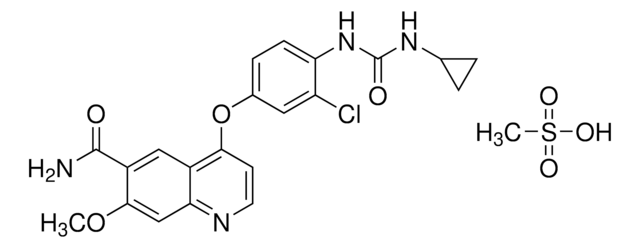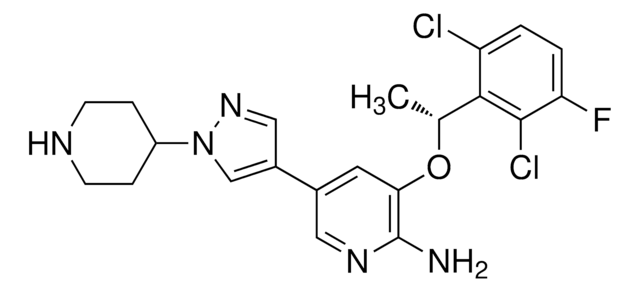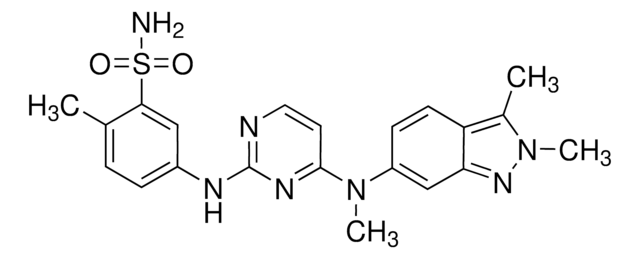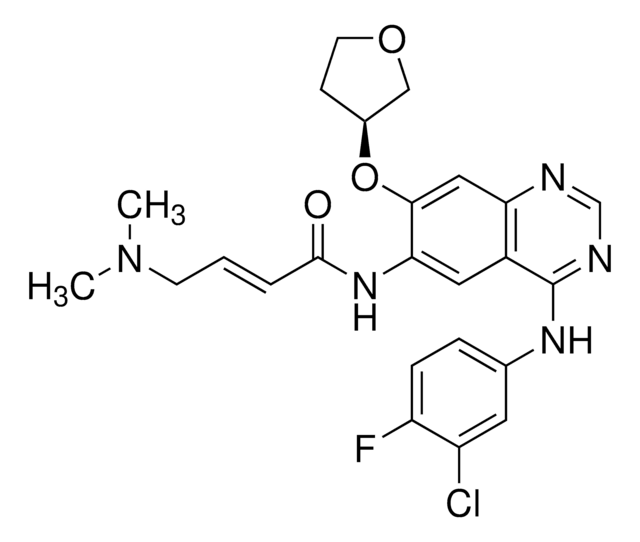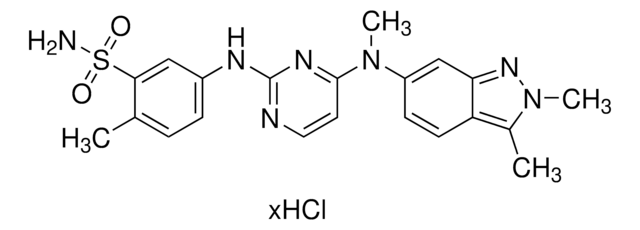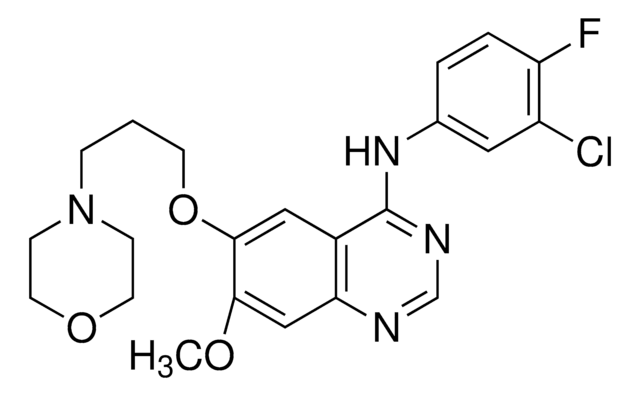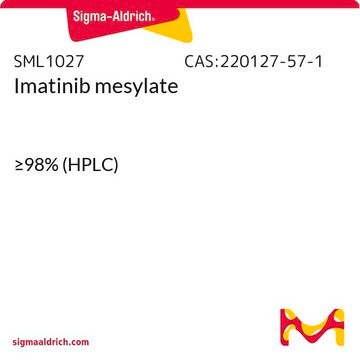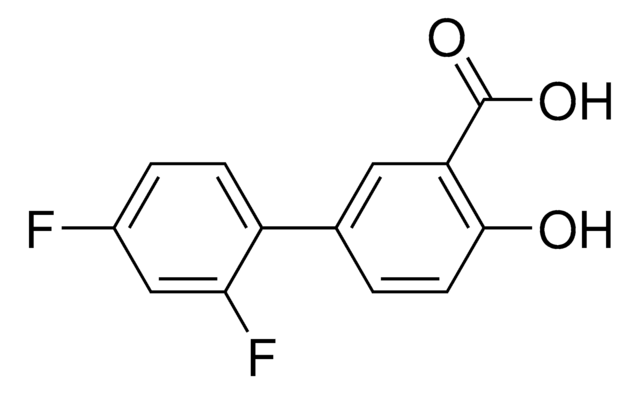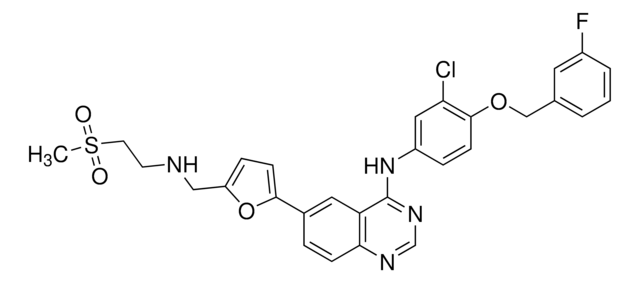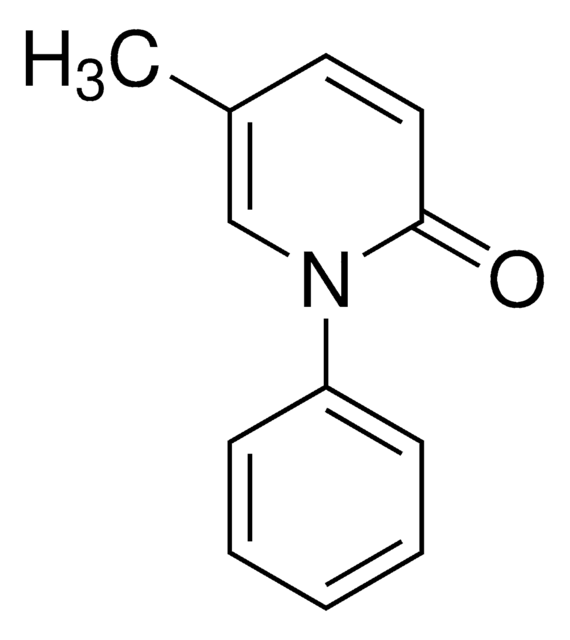PZ0193
Axitinib
≥98% (HPLC), powder, tyrosine kinase inhibitor
Sinónimos:
AG-013736, N-Methyl-2-((3-((1E)-2-(pyridin-2-yl)ethenyl)-1H-indazol-6-yl)sulfanyl)benzamide
About This Item
Productos recomendados
Nombre del producto
Axitinib, ≥98% (HPLC)
Ensayo
≥98% (HPLC)
Formulario
powder
color
white to tan
solubilidad
DMSO: ≥8 mg/mL
temp. de almacenamiento
room temp
cadena SMILES
CNC(=O)c1ccccc1Sc2ccc3c(\C=C\c4ccccn4)n[nH]c3c2
InChI
1S/C22H18N4OS/c1-23-22(27)18-7-2-3-8-21(18)28-16-10-11-17-19(25-26-20(17)14-16)12-9-15-6-4-5-13-24-15/h2-14H,1H3,(H,23,27)(H,25,26)/b12-9+
Clave InChI
RITAVMQDGBJQJZ-FMIVXFBMSA-N
Información sobre el gen
human ... FLT1(2321) , FLT4(2324) , KDR(3791)
Categorías relacionadas
Aplicación
Acciones bioquímicas o fisiológicas
Características y beneficios
Información legal
Palabra de señalización
Warning
Frases de peligro
Consejos de prudencia
Clasificaciones de peligro
Acute Tox. 4 Oral - Aquatic Acute 1
Código de clase de almacenamiento
11 - Combustible Solids
Clase de riesgo para el agua (WGK)
WGK 3
Punto de inflamabilidad (°F)
Not applicable
Punto de inflamabilidad (°C)
Not applicable
Elija entre una de las versiones más recientes:
Certificados de análisis (COA)
¿No ve la versión correcta?
Si necesita una versión concreta, puede buscar un certificado específico por el número de lote.
¿Ya tiene este producto?
Encuentre la documentación para los productos que ha comprado recientemente en la Biblioteca de documentos.
Los clientes también vieron
Nuestro equipo de científicos tiene experiencia en todas las áreas de investigación: Ciencias de la vida, Ciencia de los materiales, Síntesis química, Cromatografía, Analítica y muchas otras.
Póngase en contacto con el Servicio técnico